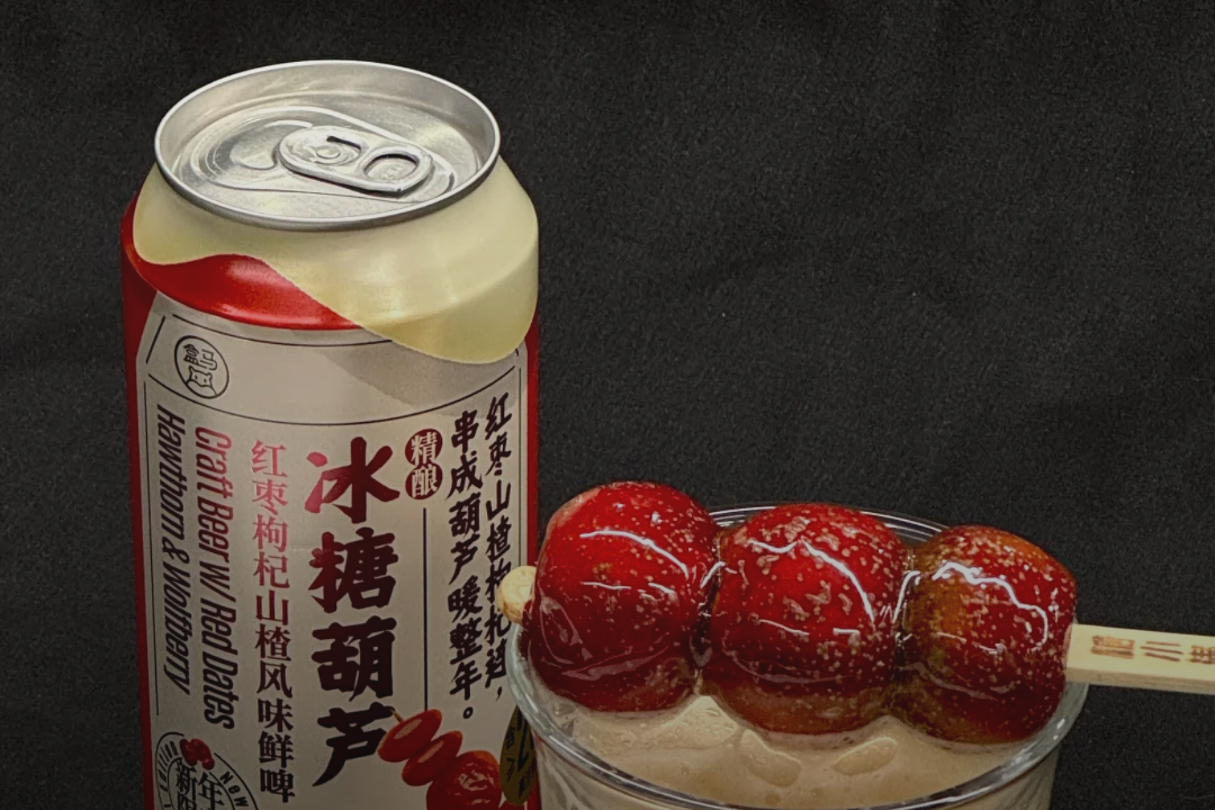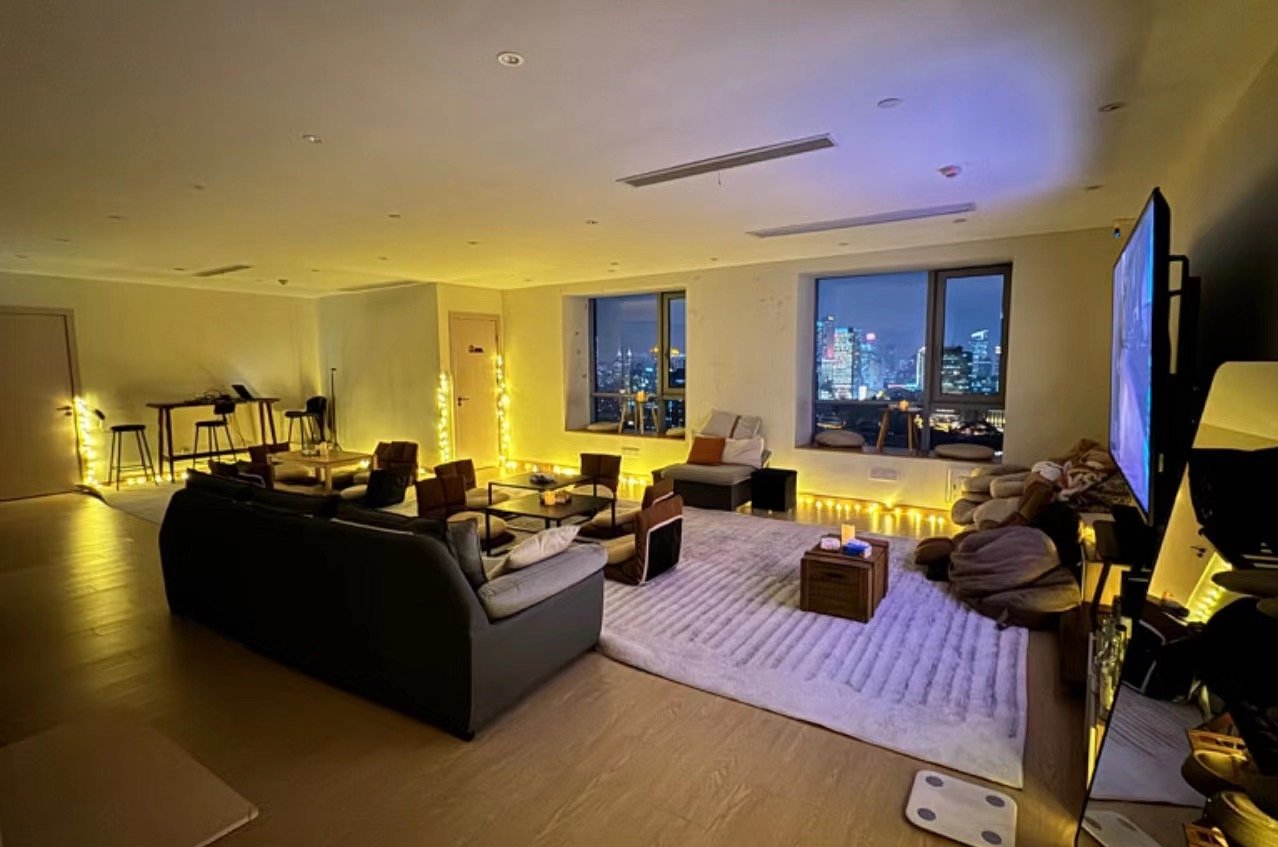Into the Night is a monthly series exploring China’s vibrant nightlife scene and the roster of young people that make parties in the country so damn fun. This month, we introduce how Club-Mate and other mate soft drinks are helping to supercharge China’s live EDM scene.
Despite challenges caused by Covid, frequent crackdowns, and skyrocketing rents for venues, the live electronic music scene in China is alive and well, with local labels breaking boundaries and dozens of clubs across the country keeping the party going. Mate (pronounced mah-tay) soft drinks, canned, carbonated herbal beverages derived from a traditional South American caffeine-rich drink made with yerba mate, help fuel the late-night mayhem.
Carbonated mate-extract beverages have worked their way into the thick of China’s underground music community, especially in the burgeoning techno subculture, where some clubs stock up to 40 cases per month.
Techno Brings Party Mate to China
Hailing from California, Eric Hoang is a ‘party mate’ enthusiast who plans to launch his own brand of mate soft drink in Shanghai. He tells RADII that the libation is particularly popular among China’s techno faithful, who are aware of its ubiquity in Berlin, the Promised Land of electronic music.
The standard practice in Berlin is to order a bottle of Club-Mate — a German brand of carbonated mate drink, take a hearty gulp from it, and return the bottle to the bartender, who then refills the receptacle with vodka or other spirits.
Although Germany has been producing mate drinks since 1898, it was only after Loscher Brewery created Club-Mate in 1994 that the carbonated and caffeinated style of mate beverage blew up. It didn’t take long for Club-Mate to become a generic trademark for all canned mate drinks in the same way Kleenex is colloquial for tissue in the U.S. and Canada.

Loscher Brewery’s Club-Mate. Image via Wikimedia
Loscher Brewery’s Club-Mate is the world’s most consumed mate drink and is sold in more than 50 countries. That said, smaller local brands are also mushrooming in Asia, such as Mate Mate in Singapore and Hoang’s soon-to-be-released brand in Shanghai.
Club-Mate’s stimulating properties and subtle flavor make for a versatile cocktail mixer and a perfect companion when dancing to techno beats for hours.
“The techno scene in China is very small,” says Hoang. “Here, all clubs share DJs, and if one bar manager finds out there is a certain product in another club, they want to have it too.”
Rarely will you find mate soft drinks gracing the menus at most clubs in China, and it isn’t mass-distributed in the country. Even so, the presence of Club-Mate and other Asian brands is ubiquitous at the hottest electronic music venues in China, from Oil in Shenzhen to Heim in Shanghai and Zhao Dai in Beijing. In short, wherever there is electronic music, there is club mate.
“I think one of the reasons it sells really well here is there are no drugs in China,” suggests Hoang. “Clubgoers want something to keep them going, but a lot of young Chinese people don’t drink that much alcohol, and their tolerance is low.”
Since it resembles tea yet functions like coffee, the drink is a win-win for both Chinese club owners and techno lovers looking to kickstart sluggish feet.
Communal Chats to ‘Liquid Adderall’
Mate’s origins can be traced back to pre-colonial South America. It was first consumed by the Guaraní people spread across parts of Argentina, Brazil, Bolivia, and Uruguay.
In South America, mate is a communal beverage enjoyed at social events and a signifier of friendship. To indulge in mate the traditional way: leaves of the yerba mate plant are steeped in hot water in a gourd vessel, and the resulting brew is sipped through a metallic straw called a bombilla, which doubles as a filter.
The gourd vessel is passed around in a circle and refilled with boiling water when necessary. If you succeed in avoiding spillage and pretending that you haven’t burnt your tongue in the process, the casual ceremony is rewarding for its intimate conversations.
If you happen to have a particularly bohemian friend who spent time backpacking in South America, chances are you’ve heard of — or tried — mate in its traditional form.

The traditional South American method of drinking mate. Image via Alexandre Debiève/Unsplash
When the soft drink version of mate was first introduced in Germany, it appealed to a different audience: hackers and tech workers.
The secret behind Club-Mate’s popularity is not its flavor, which some consider an acquired taste, but its feel-good chemicals, which many of us consume daily by way of coffee, tea or chocolate.
Although Club-Mate contains less caffeine than coffee, Hoang confesses to choosing mate drinks over coffee.
“What really makes a difference is the way your body digests the caffeine: Coffee peaks really quickly whereas mate has a more gradual curve. You don’t get the jittery feeling that coffee imparts,” he explains.
This ‘slow-release,’ which keeps tech experts awake in front of their computers, is why mate soft drinks have earned the nickname ‘liquid Adderall.’
Hold My Tea: The Future of Club Mate in China
Browse any ecommerce platform in China, and you’ll likely find yerba mate leaves, which are often advertised as a weight-loss remedy. Football superstar Lionel Messi has had a hand in the product’s growing popularity, as he frequently shares pictures of himself and his family drinking mate with his 6 million fans on Weibo.
However, local regulations still forbid manufacturers from turning yerba mate leaves into finished products such as canned mate drinks. For this reason, almost all mate soft drinks sold in China are produced abroad and imported.
According to Hoang, so far, only Genki Forest has managed to find a loophole in the regulations and produce mate-based drinks in the country. For their soft drink, called Alien Energy, the company uses mate extract instead of brewing the mate leaves.
He feels optimistic about future openings in the regulations, as other Chinese companies are showing increasing interest in producing mate soft drinks.
“They want to make this change, but government lobbying takes a long time. In the meantime, we just have to import,” says Hoang.
In a nation with thousands of years’ worth of tea-drinking history, it is culturally difficult to introduce a new tea-like drink to the Chinese market. “It’s like trying to introduce a new type of coffee in a coffee-drinking country like Italy; there would be some resistance because there is a preconceived notion of what the drink should taste and look like.”
Mate soft drinks concurrently face fierce competition from foreign caffeinated beverages that have successfully penetrated the local market, such as Red Bull.
These circumstances are why mate producers such as Hoang have focused on nightlife and nightlife alone.
“Forget everybody else. We want to brand the drink to people who are like us, people who care about culture,” he says. “And if other people like it too, well, that’s cool.”
Challenges aside, Hoang is optimistic about mate soft drinks’ marketing prospects in China.
“The market for soft drinks in China is growing really fast. Whereas most people in the countryside still stick to their bottles filled with hot water and green tea, many middle-class people are developing a taste for carbonated drinks,” he shares.
In a country where young people are taking their health into their own hands, a low-sugar, low-caffeine energy drink fits the bill. Chinese clubbers have certainly given it their stamp of approval.
Cover image via Zhuohan Shao

















